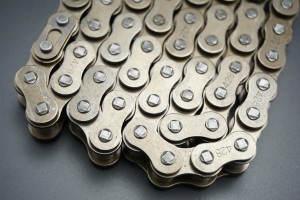Roller chains play a vital role in numerous industries including automotive, manufacturing and agriculture. Whether you’re replacing a worn chain or installing a brand new chain, determining the correct length is critical for optimal performance. In this blog, we will discuss the key steps to ensure accurate measurements and help you choose the correct roller chain length for your specific application.
Learn about roller chains:
Before delving into the process of determining the ideal length, it is important to become familiar with roller chains. These chains consist of interconnected metal links, often called “rollers,” held together by pins. Roller chains are designed to efficiently transmit power between rotating axes. Selecting the correct chain length is critical for maximum efficiency.
Measuring roller chains:
To determine the proper length of roller chain, follow these simple steps:
1. Identify the chain pitch: The first step is to identify the chain pitch, which is the distance between the centers of consecutive rollers. It is represented by a number corresponding to the chain size. Common sizes include 25, 35, 40, 50, 60, and 80. This number often appears on the side plates of the chain.
2. Calculate the pitch: Once the chain pitch is known, calculate the number of pitches required for your application. Each pitch consists of a roller and two link plates, which allows you to calculate the total number of links required.
3. Account for Variations: In some cases, you may need to adjust the chain length based on specific mechanical or installation requirements. For example, if the shafts have different center-to-center distances, allowances must be made accordingly.
4. Choose the right end connection: Roller chains typically have two main types of end connections: master links or riveted connections. Choose the appropriate termination method based on your application and ease of installation.
5. Verify Length: Finally, after following the steps above, verify your calculations by physically aligning the chain on the sprocket. Ensure proper tension without excessive slack or tension. A well-aligned chain should engage the sprockets properly, with no noticeable sag between the axles.
Accurately determining the length of a roller chain is critical to its efficient operation and the overall performance of the machinery. By following the steps outlined in this blog, you can confidently select and install the ideal roller chain for your specific application. Remember to take into account any unique requirements or adjustments, and be sure to double check your measurements before making your final purchase. Taking the time to determine the correct chain length will undoubtedly contribute to the longevity and smooth operation of your equipment.
Post time: Jul-11-2023

